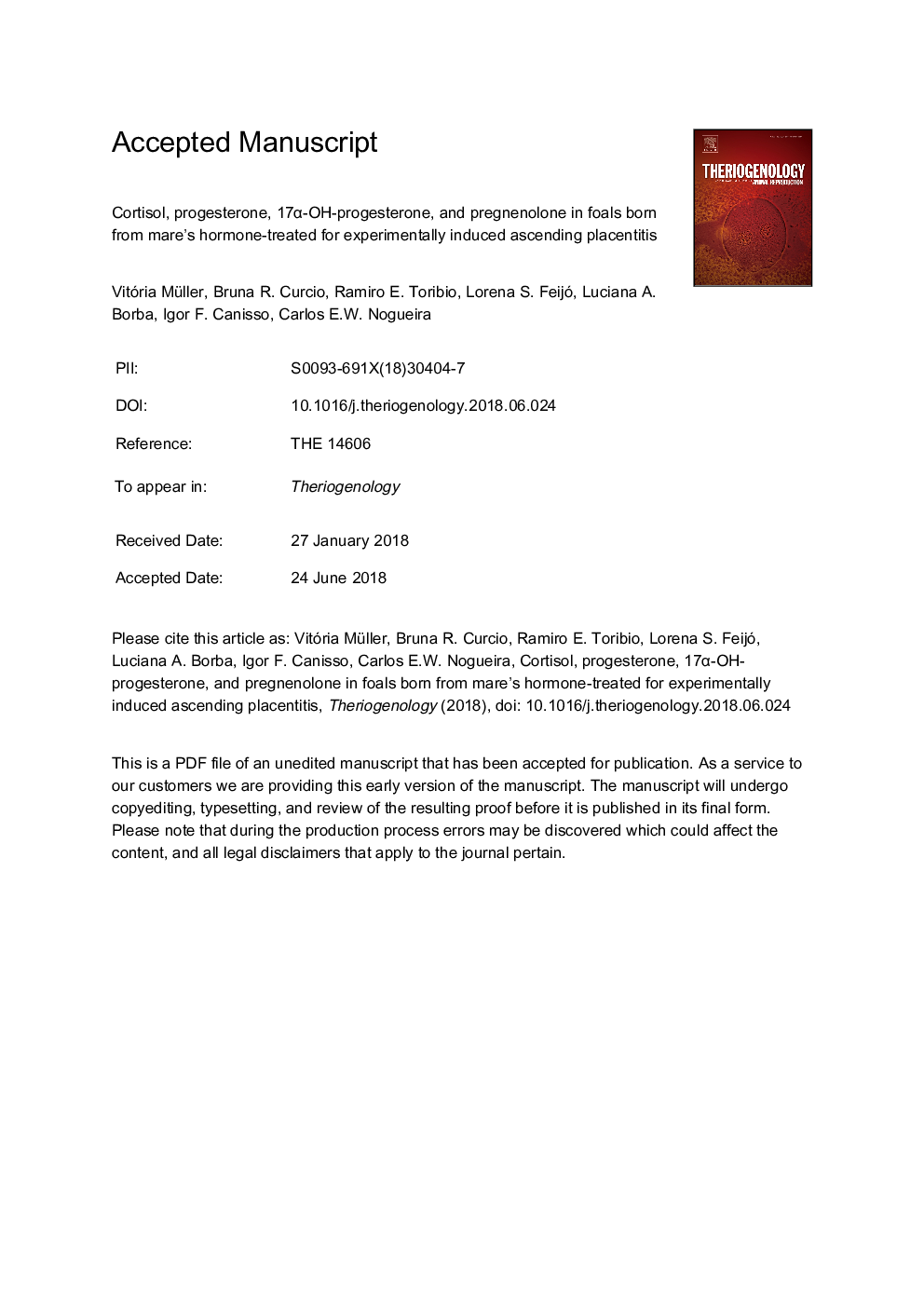| Article ID | Journal | Published Year | Pages | File Type |
|---|---|---|---|---|
| 11025959 | Theriogenology | 2019 | 27 Pages |
Abstract
This study aimed to evaluate steroid hormones in foals born from mares treated for ascending placentitis with different combinations of trimethoprim-sulfamethoxazole (TMS), flunixin meglumine (FM), long-acting altrenogest (ALT) and estradiol cypionate (ECP) for ten consecutive days, starting two days after experimental induction of placentitis with Streptococcus zooepidemicus. Fourty-six pregnant mares and respective foals were assigned as healthy group (Control, n = 8) or treated groups as follows: TMS+FM (n = 8), TMS+FM+ALT (n = 8), TMS+FM+ALT+ECP (n = 6), TMS+FM+ECP (n = 6) and no treatment (NO TREAT n = 10). At delivery, foals were classified as high-risk or low-risk based on clinical and hematologic findings, and survival rates were recorded during the first week of life for comparisons across groups. Cortisol, progesterone, 17αOHprogesterone, and pregnenolone concentrations were determined via immunoassays in 31 of the 46 foals immediately after foaling (0 h), at 12, 24, 48 h, and seven days post-partum (168h). At birth, serum cortisol concentrations were higher in Control and TMS+FM+ECP foals than in remaining groups (p < 0.05). Foals in TMS+FM+ALT and TMS+FM groups had higher 17αOHprogesterone concentrations at 24 h and 48 h, respectively (p < 0.05). Pregnenolone concentrations were higher in TMS+FM than TMS+FM+ALT+ECP foals at 7 days (p < 0.05). High-risk and non-surviving foals had decreased concentrations of cortisol at parturition, but increased concentrations of progesterone from 0 h to 48 h. Pregnenolone and 17αOHprogesterone concentrations were increased and pregnenolone after 12 h in high-risk and non-surviving foals (p < 0.05). In conclusion, adding ECP to the treatment of experimentally-induced placentitis appears to improve foal viability and endocrine response. Cortisol and progestogen profiles were abnormal in high-risk and non-surviving foals, and those treated with ALT or TMS+FM only.
Related Topics
Life Sciences
Agricultural and Biological Sciences
Animal Science and Zoology
Authors
Vitória Müller, Bruna R. Curcio, Ramiro E. Toribio, Lorena S. Feijó, Luciana A. Borba, Igor F. Canisso, Carlos E.W. Nogueira,
